Subaru Forester 2.0i-S Brochure
Share your message with Subaru Bangladesh.Please Be Patient
Subaru XV 1.6i-S Brochure
Share your message with Subaru Bangladesh.Please Be Patient
Subaru Impreza 1.6i-S Brochure
Share your message with Subaru Bangladesh.Please Be Patient
SUBARU History
back to the 1950s.
1950’s
Fuji jidosha Kogyo, Co., Ltd., established.
Fuji Heavy Industries Ltd., established.
Prototype 4-wheel passenger vehicle P-1 completed.

Prototype K-10 (Subaru 360) completed.

Subaru 360 minicar unveiled
1957.04 Prototype K-10 (Subaru 360) completed
1959.08 Subaru 360 Convertible released
1959.12 Subaru 360 Commercial released
1960.10 Subaru 450 released
1963.08 Subaru 360 Custom released
1963.12 Super Deluxe released, DX and SDX released with over top gear
1964.05 Finished 1st and 2nd in the T-1 Class of the 2nd Japanese Grand Prix
1968.11 Subaru 360 Young S & SS models released




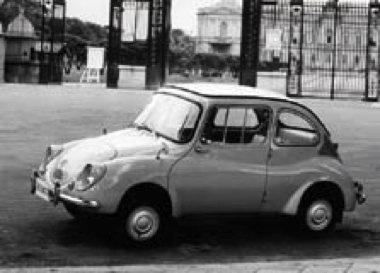





1960’s
Subaru Sambar truck released



In February 1961, the Subaru Sambar made its debut. The Sambar, based on the Subaru 360, was a truck that was outstandingly pleasant to ride and stable to drive. Compared with other four-wheel minitrucks of its day, the Subaru Sambar had the lowest deck body and the roomiest cargo bed. With its ability to neatly negotiate narrow street corners, this minitruck was a breath of fresh air in the industrial world. The following September, the Sambar Light Van was launched as a vehicle for not only commercial use, but also leisure use. With the Sambar, Subaru became firmly established as a manufacturer of light passenger vehicles.
1960.02 Released
1961.09 Light Van released
Naming: English for “Indian deer.”
Gunma Plant test course completed.

Head office relocates to new Subaru Building.

New Sambar released

Released in 1966 and dubbed the “New Sambar.”
Featuring a refined front grille and overall design, and also available with an optional variable gearbox offering 6 forward and 2 reverse gears. Naming: English for “Indian deer.”
4-door sedan released
1965.10 Small passenger vehicle Subaru 1000 unveiled
1967.02 2-door sedan released
1967.09 4-door van released
1967.11 Sports sedan released
1968.08 2-door van with front shift
1969.03 ff-1 released
1969.10 ff-1 Super Touring released
1970.07 ff-1 1300G, 1100 series released
1971.10 Subaru 1300G 4WD Van entered in the 18th Tokyo Motor Show
Naming: The “ff” in Subaru ff-1 highlighted the fact that the car had a front engine and front-wheel drive system.



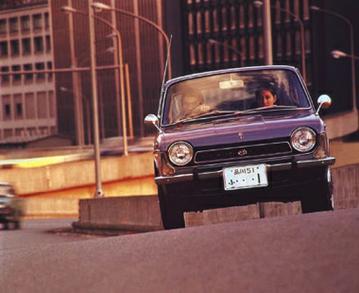
Subaru R-2 released
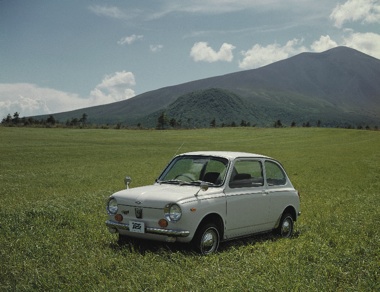



1970.04 SS, Sporty DX released
1971.02 NEW R-2 released
1971.10 Water-cooled series released
Naming: Adopting a similar script to the Subaru ff-1, the letter “R” was selected for its innovative feel and pleasant sound. “2” highlighted the fact that this was Subaru's second small passenger model.
1970’s
Leone coupe released
The Subaru Leone made its debut in June 1971, followed by the Subaru Leone 4WD Station Wagon in September 1972. Until then, four-wheel drive (4WD) was limited to off-road vehicles, however Subaru broke that tradition with a mass-produced 4WD variant of an ordinary passenger model. When the vehicle was first released, demand came mainly as a result of the special applications that the car could be used for, such as commercial use in snowy and mountainous areas. Yet the car was also highly praised in both the domestic and overseas markets for its novel design. The vehicle had steadily broadened its customer base thanks to a surge in popularity of outdoor sports like skiing and fishing. The car's popularity snowballed to the point where it became the world's top-selling 4WD passenger car, and is the origin of the Subaru AWD system.
1972.02 Leone 4-door sedan released
1972.09 Leone 4WD Station Wagon released
1973.06 Leone Hard-top model released
1977.10 The Subaru BRAT introduced



Rex released

The Subaru Rex was launched as the successor to the Subaru R-2 in July 1972. The Rex was a hit thanks to the youthful, dynamic image its styling gave it, as well as Subaru's traditional minicar features, including superior handling, driving stability, riding comfort, and fuel economy.
1973.10 4-stroke Rex released
1975.12 Rex SEEC-T released
1976.05 Rex 5 released
1977.05 Rex 550 released
Naming: Taken from the Latin term for “King.”
Goriki Sambar released






The newly release model switched from an air-cooled engine to a water-cooled one. The “Custom L” featured a electronically operated windscreen washer for the first time. The single tail lamp was changed to orange rear indicator lamps that were independent of the rear brake lamps.
1976.05 Sambar 5 released
1977.05 Sambar 550 released
1979.10 Sambar High Roof, the first light cab van, released
1980.11 Sambar 4WD released
Naming: English for “Indian deer.”
Subaru of America, Subaru Brat released.

2nd generation Leone released


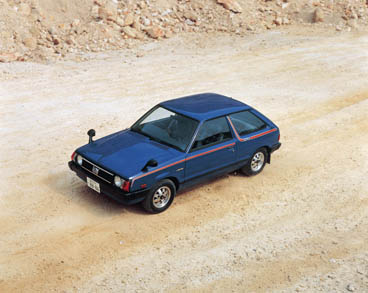
A larger body size and 1,800 cc engine gave the car a design befitting of a medium class passenger car. To drive better on rough roads, the 1.8L 4WD model came equipped with a variable gearbox system dubbed Dual Range for use as a close-ratio transmission with the 4-speed manual transmission offering eight forward, and two reverse gears.
1979.06 The New Leone Sedan released
1979.07 The New Leone Hard-top model released
1979.10 Swingback, 4WD released
1981.11 Leone 4WD automatic transmission model released (world's first MP-T model)
Naming: Taken from the Italian word for “male lion.”
1980’s
2nd generation Rex released
The rear-engine, rear-wheel drive platform that had been a mainstay from the Subaru 360 was changed to a front-engine, front-wheel drive platform. This move helped to overcome issues related to interior space, giving it a wider wheel base and the largest body size at the time in the minicar class. The Rex Combi name was given to the model with a light van body that was popular the time.
1981.10 FF Rex Sedan released
1984.09 New Rex series released
Naming: Taken from the Latin term for “King.”
New Sambar Try and High Roof Truck series released


Released in September 1982. The “Sambar Try” was released as a minivan model, and while the 4-wheel independent suspension system remained the same, the front suspension layout in 4WD models of the 4th generation Sambar were changed from semi-trailing system to a Macpherson Strut system (semi-trailing system continued to be used for 2WD models). 10-inch tyres were used for all 2WD models, and 12-inch tyres for all 4WD models (with all models featuring large 4-wheel drum brakes). The ultra-low EL gear was defined for 4WD models. Trucks came with the High Roof option regardless of whether they were 2WD or 4WD, and while no automatic transmission was available, The Try FL and FX came with an automatic gearbox.
1987.09 Sambar series upgraded; fitted with full-time 4WD
Naming: English for “Indian deer.”
Domingo released


The Subaru Domingo one-box wagon made its debut in October 1983. This series not only accommodated seven passengers in a compact body but also offered a variety of seating arrangements thanks to Japan's first swivel seats, together with folding seats.
1986.06 Domingo 1.2-litre 4WD released
Naming: Taken from the Spanish term for “Sunday” and implying that the car was designed for fun Sunday drives.
Development of the Subaru ECVT.
The ECVT employed a simple yet effective mechanism using a special steel belt and pair of pulleys made by Van Doorne's Transmissie B.V., of the Netherlands. The ECVT enabled the driver to control the car's speed without the use of complex gears. This configuration allowed the vehicle to change speeds automatically to the most appropriate gear ratio.
Subaru Justy released
The Subaru Justy was launched in February 1984. In 1987, the Justy was fitted with an advanced automatic transmission system: the world's first electro-continuously variable transmission called the Subaru ECVT.
1985.10 Justy 1.2-litre 4WD series released
1988.11 ECVT+4WD released
Naming: Stemming from the English word “Just” and implying that the car was “Proper,” “Perfect,” “Ideal” and “Just right.”

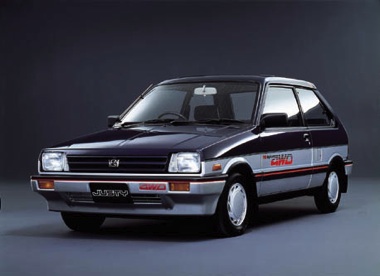
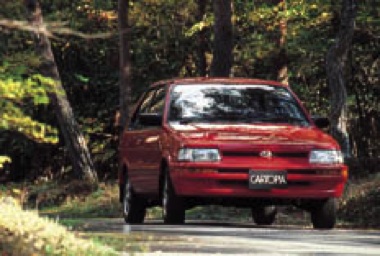
3rd generation Leone released



With a larger body size and a design based on flat, straight lines, the flush surface of the 3rd generation Leone offered superb aerodynamics with a Cd value of 0.35. The 5-speed manual gearbox MT again featured “Dual Range” technology, giving the driver 10 different gear speeds. The top-of-the-range GT model featured an air suspension system and also came with height control.
1986.04 Leone 3-door Coupe RX/II (full-time 4WD) released
1987.10 Leone series upgraded; Sedans and Touring Wagons fitted with Active Torque Split 4WD
1988.02 Maia released
Naming: Taken from the Italian word for "male lion."
Alcyone released

1987.07 Alcyone VX (2.7-litre, full-time 4WD) released
Naming: The brightest star shining in the Subaru (Pleiades) star cluster is called Alcyone, which was the basis of this model's name. The SVX is short for Subaru Vehicle X.
New Rex Combi released


A model with a 3-valve engine was developed new as a sporty grade, The “Combi” van was given the name “VIKI.” Major changes to the packaging gave rise to even greater interior space than models in the past. The automatic gearbox was also upgraded from the auto-clutch in previous models a full-automatic system (2-speed) utilising a torque converter.
1987.02 Rex 5-door sedan twin-viscous coupling full-time 4WD model released
1987.07 Rex ECVT released
1988.03 Rex series V and VX with Superchargers released
1990.03 Rex series upgraded
Naming: Taken from the Latin term for “King.”
Subaru Tecnica International Inc. established.
This company was established as a subsidiary to undertake motorsports activities, including the FIA World Rally Championships, and the development and sales of specially-designed sports parts.
Subaru MM, the Horizontally-Opposed 12-cylinder Engine, completed.
Legacy sets a new 100,000 km world speed record.

*Effective as of the end of April, 2005.
Legacy series released
Released in February 1989, Subaru took its first step into the 2.0-litre automobile market with its Subaru Legacy. Charged with the task of creating a sedan that would take its place on the world stage as a leader in the era, the design team started from scratch but eventually settled on “using a Horizontally-Opposed Engine and an AWD system, thus following the traditional Subaru technologies but at the same time rendering these as a mature compilation tailored for the new era.” In this way, the Legacy incorporated traditional Subaru technologies but was still a completely new design embodying high-quality driving performance. The line-up consisted of a 4-door Sedan and a Station Wagon, with the latter instigating a station wagon boom in Japan. In 1998, the third-generation Legacy was introduced.
1989.01 Released
1989.01 Set the 100,000 km world speed record
1993.08 First win in the WRC New Zealand Rally
Naming: English for “passing on great traditions.”


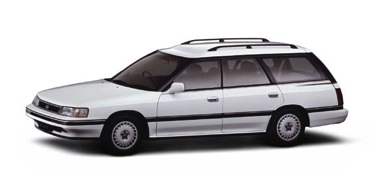


The Subaru Research and Testing Centre.

1990’s
Subaru MM engine licensed to Italian formula 1 racing team Coloni.
Full model change for Sambar series


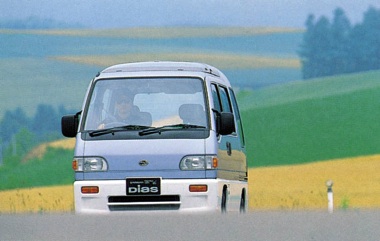
Released in March 1990 with a 660 cc capacity engine designed to suit new regulations. “Dias” was released as a premium model Sambar Try. Powered by the 4-cylinder in-line EN07 engine, supercharged models developed 55 metric horsepower with the EN07Y type engine, and NA models 40 metric horsepower with the EN07C type engine (with carburettor). The front suspension was built on ventilated disc brakes and the Macpherson Strut suspension system. Transmissions included a 5-speed manual with EL, as well as a proper ECVT option. 4WD models came in two variants, part-time and viscous full-time 4WD.
1993.12 Sambar Dias Classic released
1995.04 Subaru's first electric car, the Sambar EV released
Naming: English for “Indian deer.”
Alcyone SVX (Subaru SVX) released

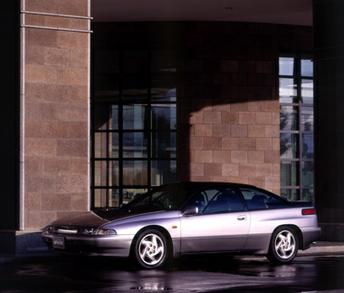
1991.01 New concept sports coupe, the Subaru SVX, displayed at the North American International Auto Show
Naming: The brightest star shining in the Subaru (Pleiades) star cluster is called Alcyone, which was the basis of this model's name. The SVX is short for Subaru Vehicle X.
Vivio released

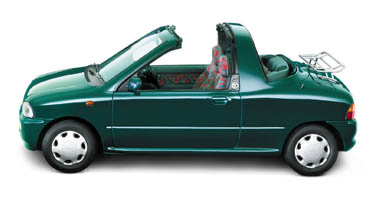

1993.05 Vivio T-top released
1993.04 Raced for first time in the WRC Safari rally, won Group A-5 class
1995.11 Bistro released
Naming: Created from the English word VIVID, and representing 660 (VIVIO) in Greek script.
Impreza series released
The Subaru Impreza was launched in November 1992. With a body more compact than the Legacy's, this series featured sporty curves, and came out in two versions: a 4-door Sedan and a Sports Wagon. The Impreza's engine, suspension, AWD system, and packaging followed those of the Legacy, and the high-performance driving and feeling of quality were further enhanced. In particular, the marvelous driving performance provided by the turbo engine and the breath of fresh air the Sports Wagon brought to the station wagon genre meant that the market welcomed the Impreza as a car with individuality.
1994.01 WRX STi added to Impreza series
1994.06 First WRC win (5th Acropolis Rally)
1995.01 2-door coupe Impreza Retna released
1995.10 Impreza Sports Wagon Gravel EX released
1998.03 Impreza 22B-STi Version released
Naming: English for “Impression.”






New Legacy sets world speed record for station wagons.

Location: Bonneville Speedway, Utah, U.S.A.
(world speed record certified by the FIA and ACCUS for mass-produced, unmodified station wagons) Vehicle: Legacy Touring Wagon GT”
New Legacy series released





Developed with the underlying theme “succession and maturity,” and offering performance and interior space rivalling that of more premium models, despite its compact class. The 4-door sedan retained its window graphics, however eliminated the black finish along the A and C pillars. This, combined with drawing the C pillar from directly above the rear wheel arch, helped to give the car a more aggressive look. The touring wagon was designed with windows that wrapped around from the side to the rear, and featured a stepped roof profile in what were common design elements evident in the previous generation. The trapezoidal shape of the front grille was also implemented new.
1993.09 Set the world speed record for wagons (249.981 km/h)
1994.10 2.5-litre 250T added to the Legacy series
Naming: English for “passing on great traditions.”
Legacy Grand Wagon (overseas name: Outback) released.
The Outback was developed with an optimum balance of the sporty, reliable drivability and interior space that the Legacy Wagon delivered on-road, combined with a wagon package for outstanding practicality. The model was given a 200 mm ground clearance to also ensure great off-road drivability. A premium yet tough looking exterior was designed with an exclusive front façade and bumper, large fog lamps with stone guards, large diameter all-season tyres, 2-tone body colour, and oversized side protectors.
1995.08 Legacy Grand Wagon (overseas name: Outback) released
1997.08 Legacy Lancaster (overseas name: Outback) released
Naming: English for “the great Australian outdoors.”
New Domingo released
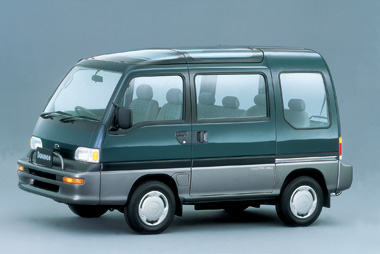
A full model change was released in 1994, the first in its 11 year history. The body frame was extended front and rear, with a Y-shaped structure used at the front to ensure safety during a frontal collision. The fuel supply to the engine was upgraded from a carburettor to EMPi, and ECVT added to the manual-only transmission line-up. Full-time 4WD was achieved with viscous-coupling to suit the ECVT, thus improving the car's terrain capabilities.
1996.04 Aladdin released
Naming: Taken from the Spanish term for “Sunday” and implying that the car was designed for fun Sunday drives.
Subaru enters all FIA WRC races in a year for the first time.

Justy introduced to the European market
The Justy debuted again with a full model change, only available in the European market. The car came in a 3-door and 5-door hatchback.
* Produced by Magyar Suzuki (Hungary)
Naming: Stemming from the English word “Just” and implying that the car was “Proper,” “Perfect,” “Ideal” and “Just right.”
Subaru puts bumper-to-bumper recycling.
Subaru Forester wins the Hulman Trophy for setting the 24-hour speed record.

Location: Indianapolis Motor Speedway, Indiana, U.S.A.
(world speed record certified by the FIA and ACCUS for Group T-1=series cross country cars)
*Hulman Trophy: The challenge for the 24-hour endurance speed record of mass-produced and marketed vehicles at the Indianapolis Motor Speedway began in the 1920s, but the Hulman Trophy was initiated in 1989, named after the speedway's previous owner, Tony Hulman.
Advanced passenger SUV, the Forester, released
The Subaru Forester made its debut in February 1997. The Forester combined the strong points of a sports utility vehicle (SUV) and a passenger car as a vehicle of a new genre based on the "best of both" concept. The basic chassis was virtually the same as that of the 1993 Legacy, a fully changed model. However, the Forester's wheelbase was reduced, ground clearance increased 200 mm and overall height to 1,580 mm. Hence, while the Forester possessed superior driving performance for poor road conditions and a high driving position required for SUVs, it still provided pleasant ride comfort for those on board.
1995.11 “Exiga” concept car unveiled at the Tokyo Motor Show
1996.10 Set speed record during 24-hour endurance race
2000.01 Minor change
2000.05 S/tb-STi released
Naming: English for “Person living in the woods” or “Person raised in the woods.”





New Subaru Legacy sets new world speed record for station wagons.

Full model change for Legacy Station Wagon series; new Legacy released





Released in June 1998, this model change eliminated front-wheel drive variants, making all grades based on a 4WD platform. The body design retained the Legacy look but was built on a more robust platform. Two rows of globes in the headlight array were used, and this was the first model to use HID lamps in the premium grade model. Interior quality was also improved immensely over existing Subaru models, and the addition of features such as the American high-end Macintosh audio brand as a manufacturer's option helped to improve quality in areas other than driving performance. Changing the rear suspension from a strut type to a multi-link type and bringing the strut towers in helped increase maximum luggage space (rear cargo room in the B4) over previous generations
1998.12 Full model change for Legacy Sedan series; Legacy B4 (Sedan) released
2000.05 Legacy series upgraded
2001.01 Legacy Touring Wagon and B4 (Sedan) Blitzen 2001 model released
2002.01 Legacy Touring Wagon GT30 and B4 (Sedan) RS30 with 3.0-litre Horizontally-Opposed 6-cylinder DOHC Engines released
2002.02 Legacy Touring Wagon and B4 (Sedan) Blitzen 2002 model released
2002.08 Legacy Touring Wagon and B4 (Sedan) Blitzen 6 released
Naming: English for “passing on great traditions.”
Legacy Lancaster (overseas name: Outback) released.
Released in June 1998, this model change eliminated front-wheel drive variants, making all grades based on a 4WD platform. The body design retained the Legacy look but was built on a more robust platform. Two rows of globes in the headlight array were used, and this was the first model to use HID lamps in the premium grade model. Interior quality was also improved immensely over existing Subaru models, and the addition of features such as the American high-end Macintosh audio brand as a manufacturer's option helped to improve quality in areas other than driving performance. Changing the rear suspension from a strut type to a multi-link type and bringing the strut towers in helped increase maximum luggage space over previous generations.
1998.12 Full model change for Legacy Lancaster (overseas name: Outback) series released
1999.09 ADA model added to the Legacy Lancaster (overseas name: Outback) series
2000.05 Outback H6-3.0, with newly-developed 3.0-litre horizontally-opposed 6-cylinder Engine, released
Naming: English for “the great Australian outdoors.”
Pleo released










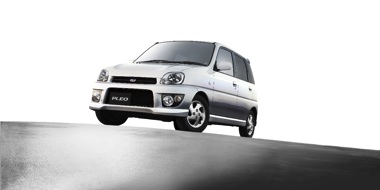
The Pleo built on the concept of the “New compact wagon that goes beyond the minicar” and took all aspects - performance, safety, utility and eco-friendly driving - to new levels in a perfectly balanced package as a new compact wagon. Designed outside of the traditional minicar definition, it was truly a new generation of minicar that was in a class of its own. Lightweight and compact, the Pleo also delivered all the benefits of outstanding fuel economy and environmental safety, and new standards incorporated into the design vastly improved safety as a model that was engineered for the future.
1998.11 Wins RJC Light Car of the Year Award
1999.06 Pleo Nesta released
2000.12 Pleo Nicotto released
Naming: Latin for “More, to completion.” The name also inspired the “Let’s play! Let’s go!” attitude.
Full model change for Sambar; new-spec Sambar released






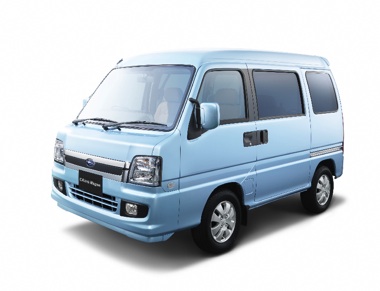


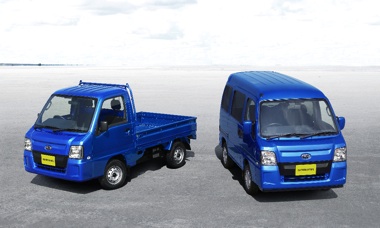
Released in February 1999. Changes to light vehicle regulations in 1998 meant that the larger Sambar retained its full-cab style for both truck and van models, with a line-up featuring the truck, van and Dias (cargo model). NA models were no longer equipped with a carburettor.
2000.11 Electric car Sambar EV released
Naming: English for “Indian deer.”
2000’s
New development of compact Horizontally-Opposed 6-cylinder Engine

Full model change for Impreza series; New Age Impreza released
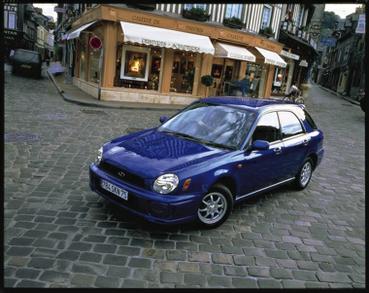


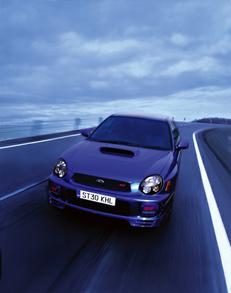








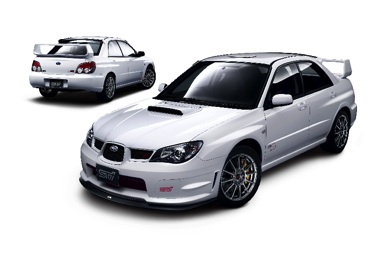
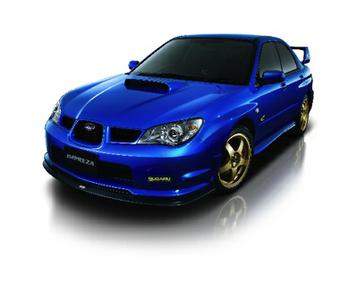

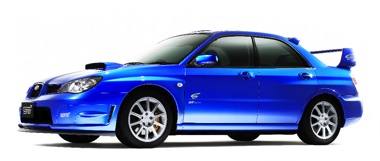




The second-generation Impreza was based on the concept of fast, fun and safe, and included features such as a new turbo engine offering superior environmental performance, and a new body with Ring-Shaped Reinforcement Frames and improved impact safety. Along with being more fun to drive, it had unique styling backed by functionality, and was a vehicle that could assert the personality of the driver.
2000.10 Impreza WRX STi series released
2002.01 Impreza Sports Wagon Type Euro released
2003.12 WRX Sti and WRX “2003 V-Limited” released to celebrate the 2003 WRC Driver's Championship
2004.07 2004 WRC Rally Japan “WR-Limited 2004” special edition model released
2005.01 “S203” released by STI* *SUBARU TECNICA INTERNATIONAL INC.
2005.08 2005 WRC Rally Japan “WR-Limited 2005” special edition model released
2006.01 “S204” released by STI* *SUBARU TECNICA INTERNATIONAL INC.
Naming: English for “Impression.”
Traviq released

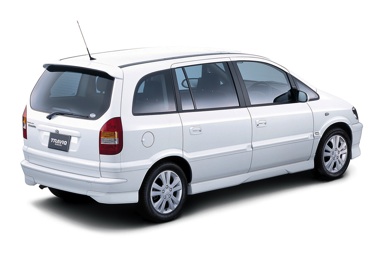
Naming: Coined by combining the words TRAVEL and QUICK.
Full model change for Forester; cross-over SUV, the new Forester, released

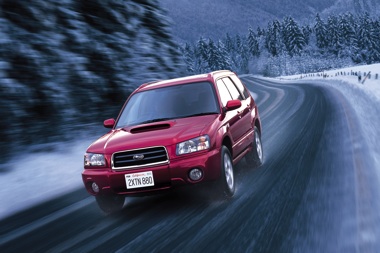








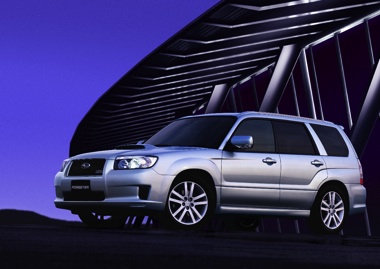
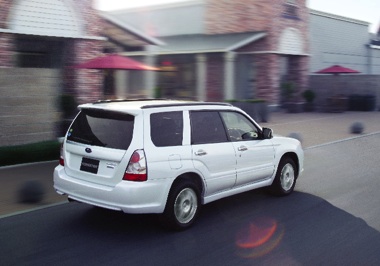
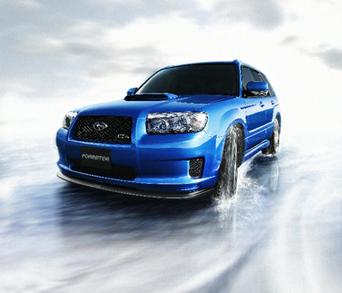
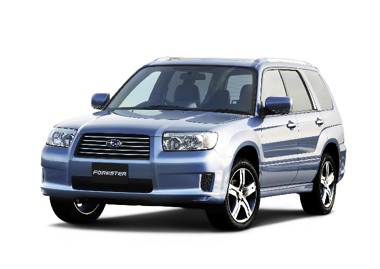


Based on the “Crossover SUV for the 'BEST of BOTH' WORLD” concept, the Forester was developed to deliver class-leading potential in the crossover SUV category. This concept fuses the benefits of both the SUV and passenger car, but is also designed to meet the various needs of day-to-day life with a single model.
2002.10 Forester Cross Sports released 2004.02 Forester STi Version released 2004.07 2004 WRC Rally Japan “WR-Limited 2004” special edition model released 2005.12 Special edition model “AIRBREAK” released
Naming: English for “Person living in the woods” or “Person raised in the woods.”
Development of Legacy B4 (Sedan) CNG model unveiled.
Subaru North American model Baja released.

Full model change for Legacy

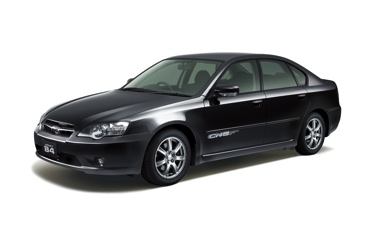





Based on the development theme of a fusion of ride, function, and beauty, the fourth-generation Legacy aimed to be a next-generation vehicle in keeping with the worldwide Legacy brand, by further improving the performance of its unique Symmetrical AWD power train centred around the Horizontally-Opposed Engine. While carrying on the styling identity from the first-generation model, the fourth-generation Legacy had a more sporty look to its sleeker body shape, and in its front face gave it a sharper image. Styling was also enhanced through its aesthetic and functional beauty, that included LED turn signals built into the side mirrors. The interior was designed to offer high-quality and sporty features with easy and rounded details. The body size was optimal as a driver-oriented car that brought with it improved safety functions, along with great handling and driving performance.
2005.01 B4 “Blitzen 2005 MODEL” released
2005.12 “Blitzen 2006 MODEL” Touring Wagon and B4 released
Naming: English for “passing on great traditions.”
3rd generation Outback released.
The Outback built on the sophisticated sporty exterior of the Legacy Wagon and adopted specially-designed front and rear bumpers, overhanging fenders and additional side cladding to give it a distinct sense of command and authority. A 200 mm ground clearance gave the car full control over rough roads, as well as excellent on-road driving performance mimicking that of touring wagon models to redefine the “crossover sports” concept.
Naming: English for “the great Australian outdoors.”
G3X Justy released in Europe

The G3X Justy* was a compact car introduced to the European market as an entry-level model for the crossover vehicle category. Drivers enjoyed the sporty driving feel that Subaru had become known for, and the entire line-up was equipped with DOHC engines and a dynamic design. The G3X Justy was available in an AWD model powered by either a 1.3-litre or 1.5-litre DOHC engine with a variable valve timing (VVT) system, as well as a front-wheel drive model with a 1.3-litre diesel turbo engine. It offered high-performance driving both on rough and on roads, with a minimum ground clearance of 170 mm.
* Produced by Magyar Suzuki (Hungary)
Naming: Stemming from the English word “Just” and implying that the car was “Proper,” “Perfect,” “Ideal” and “Just right.”
Subaru establishes a new brand message: Think. Feel. Drive.
Subaru R2 released



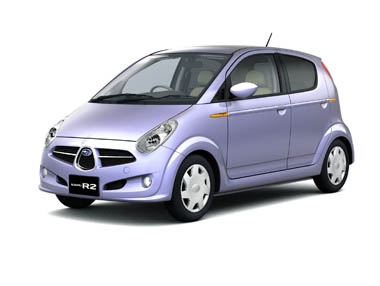


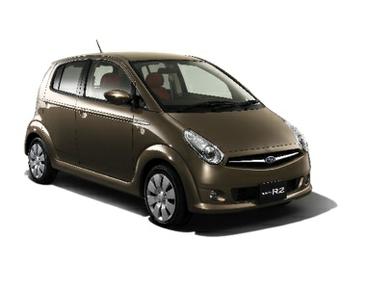


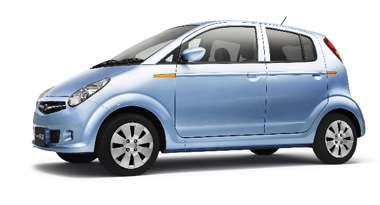
2004.11 Subaru R2 was awarded 2005 RJC Car of the Year “Special Award for Best Mini Passenger Car” 2005.11 Many changes, special edition model “Refl” released 2008.06 Many changes
Naming: The use of a simple and effective symbol notation completely redefined minicars of the past, and helped provide additional value. Revisiting the “R-2” model name announced in 1969 not only created a new image to the name, but also served to carry on Subaru's tradition with building cars.
Subaru R1 released







2005.11 Minor changes, new “S” grade added and released
2006.11 Minor changes
2009.11 Special edition model “Premium Black Limited” released
Naming: Used the letter “R” to define Subaru's minicar models for a sense of unity. The difference in size to the “R2” concept was highlighted with the numbers “1” and “2.”
The Subaru B9 Tribeca released

The largest model in the Subaru line-up, the all-new Subaru B9 Tribeca revealed its roominess in flexible seating arrangements in three rows for seven passengers. Its sporty and dynamic exterior design contrasted with a sophisticated interior design that accentuated stylish comfort and safety.
SI-DRIVE (SUBARU Intelligent Drive)
All-new Mini Car Subaru Stella released





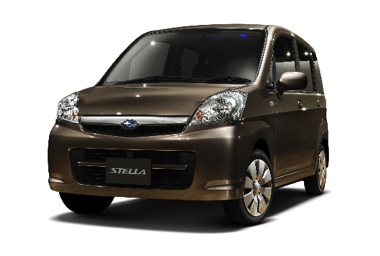
Japan’s mini car market was steadily expanded as consumers increasingly came to appreciate the ease of use and fuel efficiency that mini cars offered. Seizing upon opportunity in the market, FHI developed the Stella to meet the needs of consumers who placed an emphasis on a spacious interior and convenience of use in mini cars. It boasted top fuel efficiency levels in its class, as well as smooth acceleration, thanks to Subaru’s signature inline, 4-cylinder, 660-cc, compact engine for minicars, and a newly developed i-CVT (intelligent continuously variable transmission).
2009.-- Subaru Plug-in STELLA Concept. a New Prototype Electric Vehicle, unveiled at the G8 Hokkaido Toyako Summit
2009.04 Subaru Plug-in STELLA Prototype developed, 15 models provided to the Ministry of the Environment, Japan
2009.06 Subaru Plug-in STELLA EV released in Japan
Naming: Italian for “Stars.” Designed to brighten up any customer's day.
3rd generation Impreza released







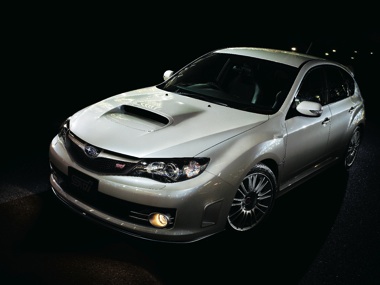






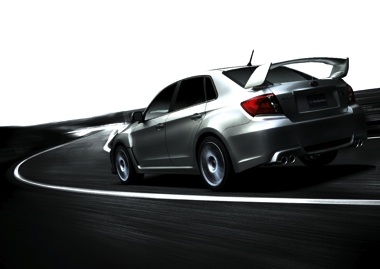



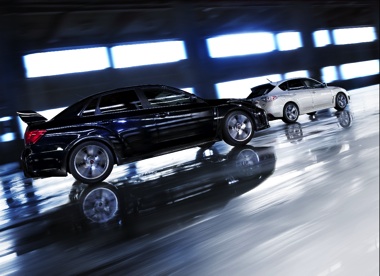


The 3rd generation Impreza was developed with the “new style of comfort” concept, and adopted a streamlined, efficient 5-door package based on smooth driving and high level of safety stemming from the combination of Subaru's core technology: its Horizontally-Opposed engine and new body layout. Featuring three different elements in one - “Stylish design,” “Easy-to-use packaging” and “Dependable and precise, enjoyable driving,” the 3rd generation Impreza was released to define a new global standard in motoring.
2007.04 All-New Subaru Impreza unveiled at the New York International Auto Show
2007.10 Additional model “WRX STI” released
2008.10 Modified 4-door “Impreza Anesis*” released * ANESIS: Greek for “safety" “comfort” “reliability” and “relaxation”
2010.01 “S205” released by STI* *SUBARU TECNICA INTERNATIONAL INC.
2010.04 WRX STI 4-Door prototype posted a 7:55:00 time around Nordschleife (“Northern Loop”) of the Nurburgring, Germany
2010.06 Modified crossover model “Impreza XV*1” released *1: XV, short for X = Crossover, V = Vehicle
2010.07 “WRX STI” modified, additional 4-door model released
2011.11 “S206” released by STI* *SUBARU TECNICA INTERNATIONAL INC.
Naming: English for “Impression.”
New Subaru Tribeca released
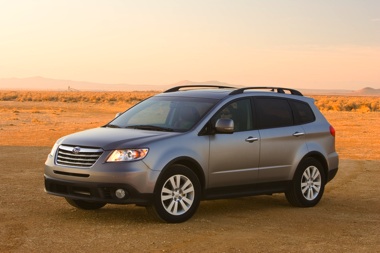

New Justy, Subaru's entry model introduced in the European market

Entry model for Europe.
The new Justy offered drivers outstanding control and a spacious interior, combined with superior fuel economy and environmentally-friendly running with its 1.0-litre engine. The Justy was marketed in two grades: the sport “1.0S” and the highly practical “1.0E.” Both came equipped with a FWD drivetrain and 5-speed manual transmission for enjoyable, agile handling.
Naming: Stemming from the English word “Just” and implying that the car was “Proper,” “Perfect,” “Ideal” and “Just right.”
New generation crossover “NEW Forester” released






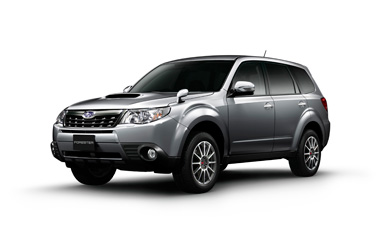

Based on the “Best Balance for Active Life” product concept and featuring various improvements to make customers' lifestyles even more active and entertaining. The 3rd generation Forester was developed with a priority focus on fusing the three main elements of ease-of-use “packaging,” “performance” backed with Symmetrical AWD stability, and “eco-friendly” to meet greater social needs.
2010.10 Modified model and additional “S-EDITION” model released
Naming: English for “Person living in the woods” or “Person raised in the woods.”
Subaru's 50th anniversary.
Development of new “SUBARU Plug-in STELLA Concept” electric vehicle announced.

New Model Subaru EXIGA, a seven-seater for panorama touring, unveiled












2007.10 Touring 7-seater “EXIGA Concept” unveiled at the 40th Tokyo Motor Show 2007
2009.09 Exiga was drastically modified
2010.08 Exiga modified
2011.06 Exiga modified
2012.07 Exiga modified Equipped with advanced driving support system “EyeSight (ver.2)”
Naming: Named for its exciting and active image.
New compact car DEX released

The Dex was designed with the concept of “Square Utility Compact” and focusing on the daily ease-of-use and unique design required for this class resulted in a model that could meet the lifestyles of customers “looking for a fun daily driver centred around city driving.”
Naming: Stemming from the word “Dexterity” and featuring a sport, intelligent design.
5th generation Legacy released








Subaru's core Legacy series was released with a full model change. The 5th generation Legacy was built on the “Grand Touring Innovation” concept and featured key proprietary technology such as the Symmetrical AWD platform built around the Horizontally-Opposed engine. Driving performance and safety developed from the 1st generation were enhanced even further, combined with greater comfort for all passengers as well as eco-friendly driving. This Legacy came with the newly developed CVT “Lineartronic” and “Cradle Frame Mount” technologies.
2010.05 Advanced “EyeSight (ver.2)” driving support system was installed in the Legacy/Outback (Japanese specifications) 2012.05 “2.0GT DIT” powered by the 2.0-litre Horizontally-Opposed 4-cylinder DOHC direct injection turbo engine released
Naming: English for “passing on great traditions.”
4th generation Outback released.
Subaru's core Legacy series was released with a full model change. The 4th generation Outback was built on the “Grand Touring Innovation” concept and featured key proprietary technology such as the Symmetrical AWD platform built around the Horizontally-Opposed engine. Driving performance and safety developed from the 1st generation were enhanced even further, combined with greater comfort for all passengers as well as eco-friendly driving. This Outback came with the newly developed CVT “Lineartronic” and “Cradle Frame Mount” technologies.
2010.05 Advanced “EyeSight (ver.2)” driving support system was installed in the Legacy/Outback (Japanese specifications)
Naming: English for “the great Australian outdoors.”
2010’s
WRX STI 4-Door prototype posted a 7:55:00 time around Nordschleife (“Northern Loop”) of the Nurburgring, Germany.
2nd generation Pleo released


The concept behind the new Pleo was “ideal compact size for outstanding practicality and economy,” and it was a minicar designed to be easy to drive and simple, coupled with a great design. Practicality and economy in the form of a comfortable interior and great fuel efficiency made it the ideal minicar for exciting, day-to-day driving. All NA models were covered by the eco-car subsidy (subsidy for promoting the sales of eco-friendly cars) among other features that were focused on the environment.
2012.12 New minicar Pleo Plus released
Naming: Latin for “More, to completion.” The name also inspired the “Let’s play! Let’s go!” attitude.
Newly designed minicar LUCRA released



2012.01 LUCRA series modified. Equipped with Idle Stop system
2012.05 LUCRA Custom model minicar with turbo engine released
Naming: Coined from the initials of “Large” “Utility” “Comfort” “Relax” “Active.” Offered a comfortable, spacious cabin, with a refined, easy-to-use image.
2011 Impreza WRX Models released

FHI’s brand statement “Confidence in Motion” developed as the key to the new age of Subaru.
New compact car Subaru TREZIA released

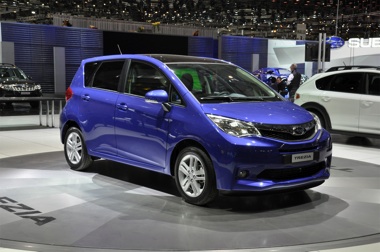


2011.11 Modified special edition model “Sport Limited” released
2012.08 Minor changes. Paddle-shift added to 1.5-litre models
Naming: From the English word “Treasure” and implying a driving experience like none other.
Newly designed minicar Stella released



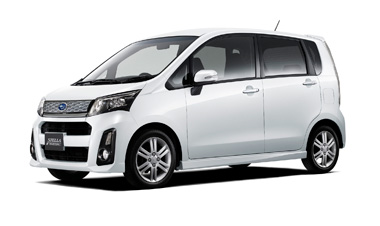
The new Stella was designed with the “Smart Active Small” concept, and was a compact car that offered a spacious interior, easy handling and outstanding fuel efficiency.
2013.01 Stella modified Equipped with the first crash avoidance system for minicars 2013.08 Stella Custom equipped with “Smart Assist” crash avoidance system
Naming: Italian for “Stars.” Designed to brighten up any customer's day.
Subaru WRX STI won the SP3T class of the 24 Hours Nurburgring.
The 4th generation all-new Impreza was developed.
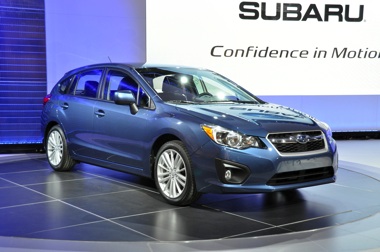



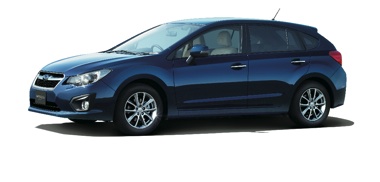
This fourth generation all-new Impreza was developed under the concept of “Redefining Value, Redefining Class”. Its aim is to provide a new level of value not known to exist until now. Superior reliability, handling and safety features of the Subaru Symmetrical AWD (All-Wheel Drive) system with the Horizontally-Opposed Boxer engine at its core - these among many other qualities have made possible a safe and environmentally-friendly high grade global car while enhancing the sportiness of the Impreza.
2010.11 “Subaru Impreza Concept” was unveiled at the 2010 LA Auto Show. 2011.04 Subaru Exhibits All-New Impreza at New York International Auto Show. 2013.03 World Premiere of the “SUBARU WRX CONCEPT” at the 2013 New York International Auto Show.
Naming: English for “Impression.”
Subaru Commemorates the 40th Anniversary of Its AWD Vehicles.

*1 including production of part-time 4WD vehicles
FHI Gunma Oizumi Plant Marks 30 Years of Production.

Production of Minicars Ends


Subaru’s renowned automotive history in Japan dates back to 1958 with the release of the “Subaru 360.” Minicars were key models for the Subaru brand, with almost 8 million units from nine different model lines produced over 54 years. With features including all-wheel drive and CVT, Subaru’s minicars were acclaimed for functionality and utility on par with regular passenger and commercial models.
“SUBARU BRZ” released
By mounting the Subaru Boxer engine as low as possible within the chassis and closer to its centre, the boxer’s inherent advantages of low centre of gravity, light weight, and compact size were maximised. Subaru BRZ achieved the honour of having one of the lowest possible centres of gravity in the world. A fun sports car that any driver could enjoy driving with peace of mind.
2011.09 “SUBARU BRZ PROLOGUE - BOXER Sports Car Architecture II -” unveiled at the 64th Frankfurt Motor Show.
2011.11 “SUBARU BRZ CONCEPT - STI -” made its World Premiere at the Los Angeles Auto Show
2011.12 SUBARU BRZ unveiled at the 42nd Tokyo Motor Show
2012.05 Subaru BRZ Named “VDI Car of the Year” by 2012 Vehicle Dynamics International Awards
Naming: The name “BRZ” stands for “Boxer engine” “Rear-wheel drive” “Zenith”; it also embodied Subaru’s passion for an ultimate sports car that features Subaru’s core technology: the Horizontally-Opposed Boxer engine.




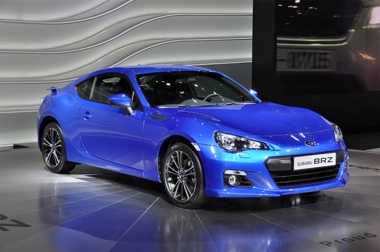
SIA Becomes First U.S. Car Manufacturing Plant to Receive ISO 50001 Certification.
Launched in 2011, ISO 50001 outlines the internationally recognised requirements for energy management systems (EnMS). The standard provides organizations with management strategies to increase energy efficiency, reduce costs and improve energy performance.
All-New “SUBARU XV” released
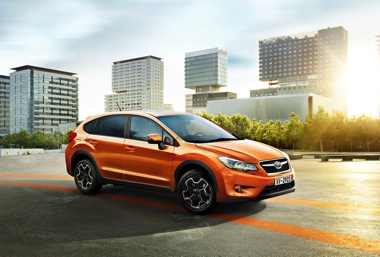
The fundamental product concept that Subaru adopted for the XV was “Urban Adventure.” In specific terms, a vehicle that was perfectly suited to exciting, lively, yet stress-free use in the city. Thus, Subaru balanced optimal performance factors such as fuel efficiency and enjoyable driving (Fun to Drive) with a stylish, highly distinctive exterior design.
4th generation Forester released


The new Forester was developed to “Deliver the real value of an SUV.” Built around Subaru's proprietary Symmetrical AWD technology, the basic performance areas of any car - driving, safety and environmental - were enhanced further to give greater enjoyment as an SUV, as well as greatly improving fun as a mode for stress-free driving and mobility.
First Subaru XV Rolls off the Production Line in Malaysia

“SUBARU XV CROSSTREK HYBRID” released

Fuji Heavy Industries Ltd., 60th anniversary of the company.
Subaru Reached Milestone of 20 Million Units in Japan

All-New “WRX” Revealed
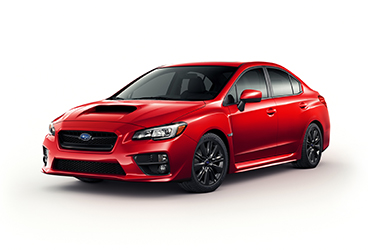


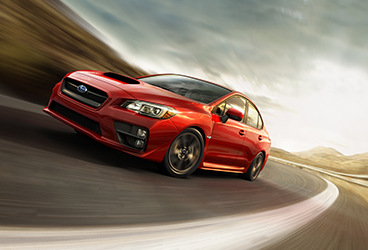

With “Pure Power in Your Control” as the concept of the all-new WRX, the intense power and superior environmental friendliness of the 2.0-litre Horizontally-Opposed direct injection turbo “DIT” engine was combined with a body and chassis that was thoroughly stiffened. The standard six-speed manual transmission was also complemented with a new Sport Lineartronic transmission.
“LEVORG” released
The new sports tourer Levorg was the fruit of Subaru's commitment to driving enjoyment and practical touring abilities, delivering a stress-free drive even in long distances. Levorg is the embodiment of Subaru’s longtime achievements and symbolizes the latest Subaru standards. Levorg combined smooth and lively power, with an exquisite and stylish design with abundant load capacity.
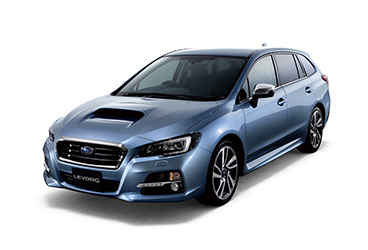

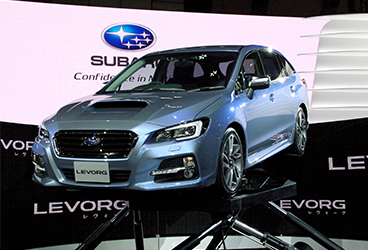

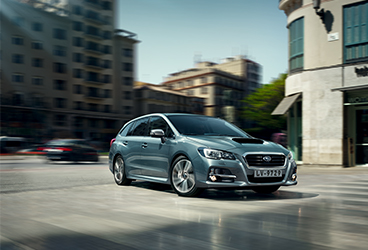



All-New WRX STI released



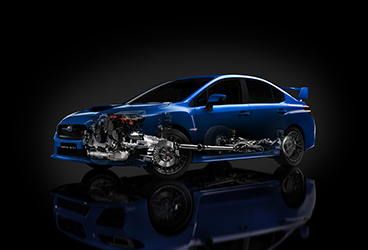

The new sports tourer Levorg was the fruit of Subaru's commitment to driving enjoyment and practical touring abilities, delivering a stress-free drive even in long distances. Levorg is the embodiment of Subaru’s longtime achievements and symbolizes the latest Subaru standards. Levorg combined smooth and lively power, with an exquisite and stylish design with abundant load capacity.
6th Generation “Legacy” released




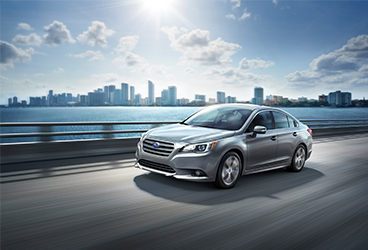
The new Legacy ushered in the sixth generation of its model, a full 25 years since the first generation Legacy was released in 1989. The Legacy's polish gave it universal appeal as a true sports sedan providing trust-inspiring driving excitement, an inspiration to drivers to dream bigger and imagine a fuller lifestyle.
5th Generation "Outback" released





It was the 5th generation of this model since the original version appeared in 1995. The common value linking all these models has been the crossover concept, which integrates the strengths of passenger car and SUV. In developing each generation, Subaru has consistently sought to deliver a presence and value that reflects its flagship crossover model.
Corporate Headquarters Relocated to New Ebisu Subaru Building

WRX STI Scored Class Win in the 2015 Nürburgring 24-Hour Race




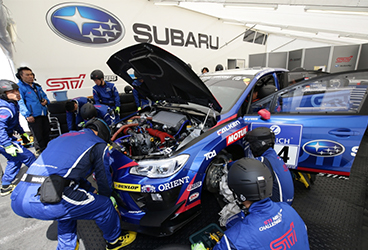
Subaru Reached 15 Million AWD Vehicle Production Milestone





“Subaru Global Platform” Announced



50th Anniversary of the Horizontally-Opposed “BOXER” Engine






WRX STI Scored Back-to-Back Class Win in the 2016 Nürburgring 24-Hour Race





Subaru 360 Model K111 Designated as Mechanical Engineering Heritage Item

5th Generation “Impreza” released





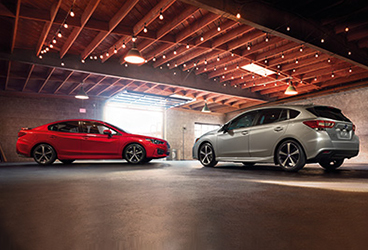

It employed the completely revamped Subaru Global Platform architecture for the first time, significantly enhancing the body and chassis rigidity and strength. The Impreza was the first production model to fully incorporate the DYNAMIC x SOLID design philosophy. It also featured a greatly enhanced interior and exterior finish as a next-generation C segment model.
First American-made Impreza Rolled Off Assembly Line at Subaru Plant in Indiana



Company Name Changed to SUBARU CORPORATION

All-New ”SUBARU XV” released
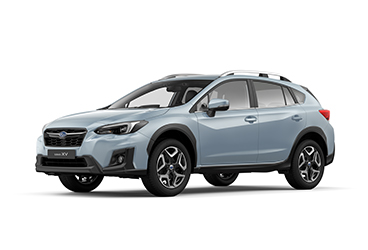







Representing the first full model change since the original Subaru XV was launched in 2012, the new model offered a distinctive design and enhanced drivability on poor road surfaces, and adopted the all-new Subaru Global Platform to achieve world-class collision safety and superior hazard avoidance as well as dramatic advances in driver-responsive handling and ride comfort.
Subaru Launches the “Subaru Forest Project” for Environmental Conservation in Japan
With the declaration, “The earth, the sky and nature are Subaru’s fields of business,” Subaru considers the planet’s ecosystem of utmost importance for the future sustainability of society. The Subaru Forest Project involves planting new trees, thinning and other environmental conservation activities in forests on Company properties. As part of its corporate social responsibility (CSR), Subaru aims to provide “Enjoyment and Peace of Mind” while helping to improve society and the environment.
ALL-NEW ASCENT 3-ROW SUV released

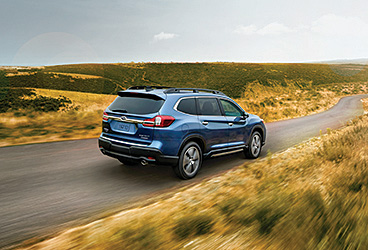


The all-new Ascent is powered by an all-new 2.4-litre 4-cylinder Boxer direct fuel injection turbo engine, offering drivability and fuel economy equal to or better than that of 6-cylinder engines. It comes standard with EyeSight Driver Assist Technology and Symmetrical All-Wheel Drive, with X-Mode for the optimal blend of drivability and SUV capability. The all-new Ascent will be built at Subaru’s US plant, Subaru of Indiana Automotive, Inc. and delivered to Subaru retailers in early summer 2018.
SUBARU60th anniversary
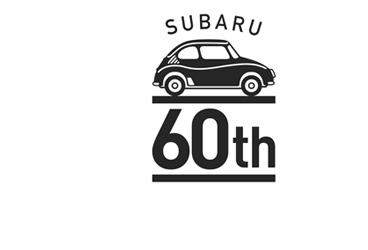
All-New Forester released

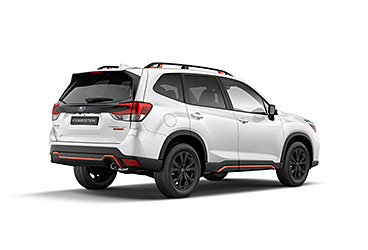





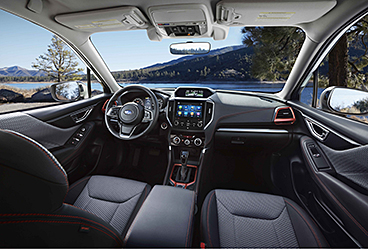
As one of Subaru’s top-selling models, the all-new Forester features packaging that allows all passengers to share comfort and enjoyment, balancing easy handling with a spacious interior, and user-friendly features. It combines the hardiness of an SUV with comfort and convenience in line with Subaru’s design philosophy “Dynamic x Solid.”
Built on the Subaru Global Platform, the all-new Forester achieves top-of-its-class collision safety and hazard avoidance. Comfortable drivability is backed by Subaru core technologies like EyeSight driver assist system, Symmetrical All-Wheel Drive built around a newly developed 2.5-litre direct-injection engine, and X-Mode for enhanced all-terrain drivability.
Subaru WRX STI Won the SP3T Class in Nürburgring 24-Hour Race
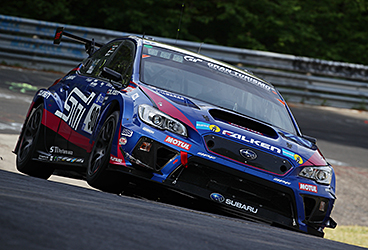
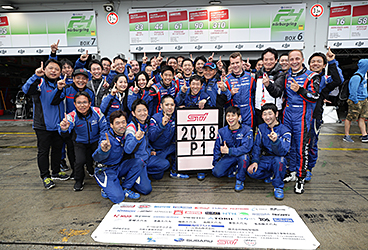
Starting from pole position, the team experienced mechanical trouble early on, however the team of mechanics and four drivers, Carlo van Dam (Netherlands), Tim Schrick (Germany), Hideki Yamauchi (Japan) and Takuto Iguchi (Japan), closed the gap and regained the top position. Weather conditions worsened later, but the Symmetrical AWD (All-Wheel Drive) of the WRX STI proved its worth by passing competitors in higher classes. The car suffered engine trouble just an hour before the finish, but it returned to the course to win the SP3T class in 62nd position overall.
This marks the 5th win in the SP3T class for Subaru/STI team, taking revenge from their loss last year. The victory is a testament to the AWD sports performance that the Subaru WRX STI is capable of.
SUBARU XV e-BOXER model released


The SUBARU XV was developed with the concept of Fun Adventure, with a sophisticated urban design backed with SUV versatility and class-leading safety. The new “Advance” grade is powered by the e-BOXER engine, combining Subaru’s proprietary Boxer engine with an electric motor for smooth, nimble acceleration as well as capable performance and everyday drivability. The model was also upgraded with innovative enhancements and a fresh “Lagoon Blue Pearl” to suit the concept of the “Advance.”



